
By Steven Erlanger
Monday, October 27, 2008
BOURCEFRANC-LE-CHAPUS, France: For Thierry and Véronique Gillardeau, the oyster has become their world.
A member of the fourth generation of a family of oyster farmers, Thierry, 37, has brought an economics education to what has become the most famous name in oysters: Gillardeau.
The family's small private company, founded 110 years ago here by the sea near La Rochelle and the Île d'Oléron in western France, produces only "spéciales," oysters that are fleshier and, consequently, more expensive than the standard. The Gillardeau name has become associated with fine oysters, rather like Hermès for neckties.
Thierry's father, Gérard Gillardeau, 61, took over the business from his father, Jean, who ran it after his father, Henri, who began as an illiterate farmhand before turning his hand to oysters. Oyster farming then dominated the economy of the region, where the Charente and Seudre Rivers add their fresh water to the salt flats and estuaries.
Henri did well enough to build a large house opposite City Hall in this village of 3,500 people, a house he called "Ça m'suffit," or "That'll do." Thierry and Véronique live there today with their two children.
"My grandfather couldn't read, but he knew how to count," Gérard said. "Now, oyster farmers know how to read but not how to count."
Many of his neighbors still farm oysters "the way they did in the Middle Ages," he said, by taking the seedlings to full growth in small oyster basins next to the sea, farming them in small, flat-bottomed boats and doing much of the work by hand. "They could be more profitable," he said. "But the past is so important to them that they don't want to change."
That attitude makes the Gillardeau family something of an anomaly in a nation famously resistant to change, especially in how it produces food and wine.
In 1978, Gérard sought to expand beyond his village and found a partner in the huge wholesale market in Rungis, just outside of Paris, a step that helped the Gillardeau company make a name for itself. For the past 15 years, sales have increased roughly 20 percent a year, Thierry said at a conference in May. As a private company, it does not reveal its accounts.
"In some business schools, they are studying our case like a case of marketing," he said. "But you have to know that there is no marketing behind Gillardeau, only quality." In fact, he said, marketing is by word of mouth. "Because our oysters are good people want to eat them again and again," he said. "They will go to a restaurant and say, 'Why don't you serve Gillardeau?'"
The number of local oyster farmers here in western France has dropped from more than 3,000 two decades ago to 700 now. Gillardeau no longer farms its oysters here. It now produces roughly half its oysters in Normandy, near Utah Beach, and half in County Cork, in Ireland, where the waters are cleaner and the sites easier to farm with tractors, and where there are fewer parasites and less agricultural runoff.
It employs some 100 people in all, but still sorts, finishes and packs its oysters here, producing about 2,000 tons a year of an annual French production of some 130,000 tons.
Unlike many other companies, Gillardeau buys seedling oysters that are one to two years old. That way it avoided most of the impact of the widespread death of younger French seedling oysters this year, believed to have been caused by a warm winter, heavy spring rains and possibly excess runoff of fertilizer and pesticides from local vegetable farms.
To protect the future, Thierry bought 20 million seedlings unaffected by the blight at a premium in Ireland, where the company will raise them itself.
Gillardeau normally farms the two-year-old oysters it buys for the next two years, coaxing them into a shape like a lemon and maximizing the quantity of the flesh by carefully adjusting the depth and salinity of the water. The company tries to keep its oysters from clumping together, putting 135 to 150 oysters in each of the thick plastic-screening sacks that can hold 1,000.
Workers with tractors turn the sacks every two weeks or so, to break the small shells that the oysters produce, to "stress" the oyster to eat more and to grow in the desired form. "You shape an oyster a little like a piece of furniture," Thierry said.
Oysters are then trucked here to be finished and packed. They spend several weeks in oyster ponds, with water changed regularly and salinity measured carefully, before being washed and sorted by size.
Before a batch is packed, one Gillardeau or another makes sure to taste a few oysters. Theirs are less briny than many others' — nuttier, fleshier and almost sweet.
The family firm is a tradition in France, but one extending four or five generations is rare. "I didn't want to work with my father," Thierry admitted. He went to a university and studied economics, starting his first company at 19, renting surfboards and selling drinks on the beach. After his military service, he cast around in import-export.
"But my father was in difficulties with his partner in Rungis," Thierry said. "He asked me to look into it." Since the age of 17, Thierry had worked every Christmas, high oyster season, at the huge Paris market, and he always fought with the partner, he said, smiling. "So I got rid of him" and invested in another Rungis company, he said.
"It was Rungis that gave me a love of oysters," he said. It was also in Paris, at a New Year's Eve party, that he met Véronique, a Belgian who was working at the fashionable Escada store. They married, and he brought her here 10 years ago.
"She worked for Escada, and now she can wear rubber boots and a hat pulled down to here," Thierry said, slightly ruefully.
Véronique is good-natured and proud of the company. "Of course there is jealousy," she said, when asked about competitors. "It's a small village, and everyone does the same thing." Gérard said neighbors had sneaked some oysters out of Gillardeau ponds, just to taste them.
Michael Moreau, an oyster farmer here, said the active oystering life that he remembered from when he was a boy had changed. "I could hear everyone laugh and drink and yell at each other, but that doesn't exist any more," he said. "Now it's abandoned. It's over. It's been industrialized."
Of course there is jealousy of the Gillardeau firm, Moreau said. "But he could have gone to Normandy, and instead he stayed here."
Bernard Jaulin, 57, gave up oyster farming nine years ago with great regret, in part because his two daughters had no interest in the business. He is now remodeling a bar-restaurant he bought in nearby Fouras. "Now it's different," he said. "It's bigger, more modern, more technological." The local oyster beds, he said, "don't give any more."
Asked about Gillardeau, his eyes lighted up. "Have you tasted them? The taste is exquisite. They have that extra body," he said, crunching his jaws.
A Place in My Country
Ian Walthew
Farm Blogs
Ranch Blogs
Rural Blogs
Countryside Blogs
Smallholding Blogs
Urban Homesteading Blogs
Homesteading Blogs
Homestead Blogs
Allotment Blogs
Apiculture Blogs
Bee-keeping Blogs
Auvergne
Auvergnate
Auvergnat
Auvergnats
France
Rural France
Blogs about France
Paris / Montmartre/ Abbesses holiday / vacation furnished apartment rental







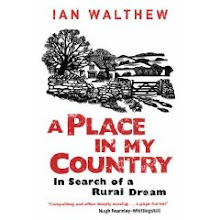


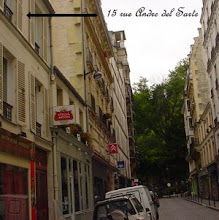
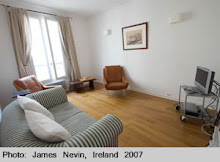

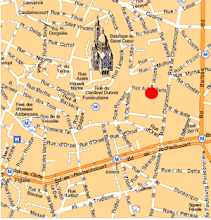
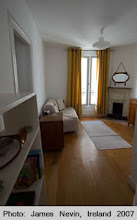
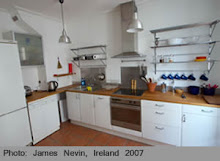
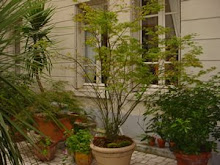
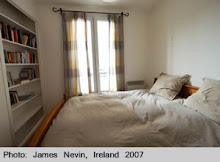



No comments:
Post a Comment